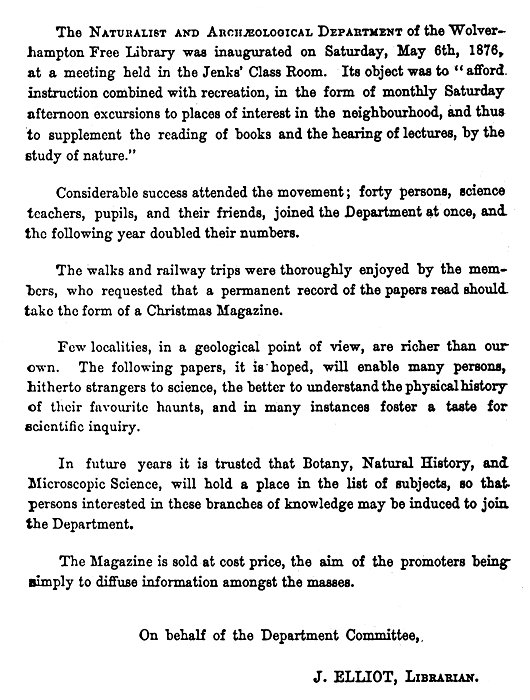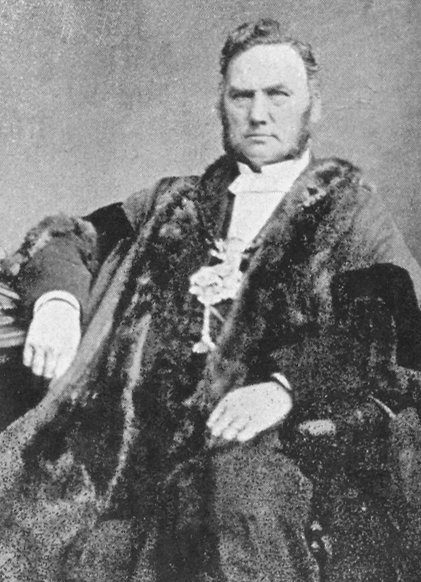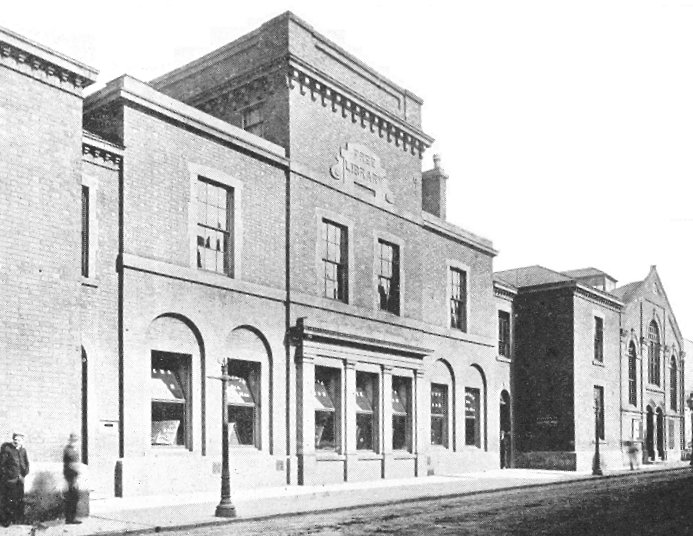|
Garrick Street Free Library
In June 1872, after the buildings
had been suitably altered, the library moved into the Garrick Street
premises. Around the same time, the
committee agreed to purchase a large high-class lending
library at Portsmouth, along with all the fittings, for
just £200, which greatly increased the number of books
in the collection.
Mr. Elliot, the librarian, seeing
a great need for the teaching of science
among the working classes,
formed a number of evening science classes for the
special benefit of those who were at work all day. This
was the first move towards providing a technical school,
and cost Mr. Elliot much self denying labour.
The
First Technical School
To practically develop this idea,
sixty young men entered as students, and formed a
science class. In 1874 Alderman Isaac Jenks gave £100 to
the committee for the conversion of the old police cells
into a large classroom, which led to the formation of
many evening classes, covering a wide range of subjects. |

A note from John
Elliott. Christmas 1877.
|
William
Highfield Jones started a prize fund
for the encouragement of students
attending these classes. The prize
fund provided suitable books for
successful students, which were
distributed at the annual meetings
of the Free Library Commissioners.
In 1888 a
chemical laboratory was built on
land at the back, as was a
metallurgical laboratory, which
opened in January 1892. In 1890
there were 30 chemistry students and
in 1894 there were 14 metallurgy
students.
The premises in
Garrick Street were fully occupied
and more space was required. The
Free Library Committee brought the
subject before the Town Council, and
asked their help.
After the
matter was discussed at a Council
meeting, £4,000 was granted as a
loan. With this money a spacious
lecture hall, larger classrooms, and
a reference library were added to
the original buildings. |

Isaac Jenks,
JP. |
|

Garrick Street
Free Library. |
|
Laboratories
Because of the many
local industries that were involved in the
production and use of metals, it was
decided that laboratories should be
established for the practical teaching
of chemistry, physics, and metallurgy.
As a first step, the committee reported
that: "It is with great gratification
that, in view of providing a site for
the erection of the proposed laboratory
for the practical study of chemistry,
and adding to the classrooms and the
general accommodation of the
institution, Joseph Jones, the chairman,
with his brother, Mr. John Jones,
purchased and presented a piece of land
containing 428 yards, at the back of the
library, which the committee had wanted
to possess for a long time." Several new
laboratories soon appeared there.
In 1889, a chemical
laboratory was built, the cost of which
was raised by subscription. This was so
successful that at the end of the first
year, out of thirty students examined in
practical chemistry, twenty four passed.
The next step was to provide instruction
in metallurgy. To prepare for this, in
1893, a laboratory, with furnaces, was
built. Sir Alfred Hickman, donated £500
toward the cost, and the balance was
raised by subscription. Electrical
engineering was becoming commonplace at
the time and so the Chairman, Joseph
Jones, provided at his own expense an
electrical engineering laboratory, which
opened in 1898. |
|

From the 1892
Wolverhampton Red Book. |
|
The Garrick Street
site had nearly doubled in size since
the library first moved there. The
lending and reference libraries were
very popular as was the archaeological,
botanical, geological and industrial
museum. The lending library contained
around 28,000 books and the reference
library had around 7,500 books. The news
and reading rooms were extremely well
used from morning to night. The courses
also became popular and a large number
of students attended the evening
classes. The whole enterprise had been a
great success. |
 |
|
 |
|
 |
Return to Queen
Street Free Library |
|
Return to
the contents |
|
Proceed to Garrick
Street Photos |
|